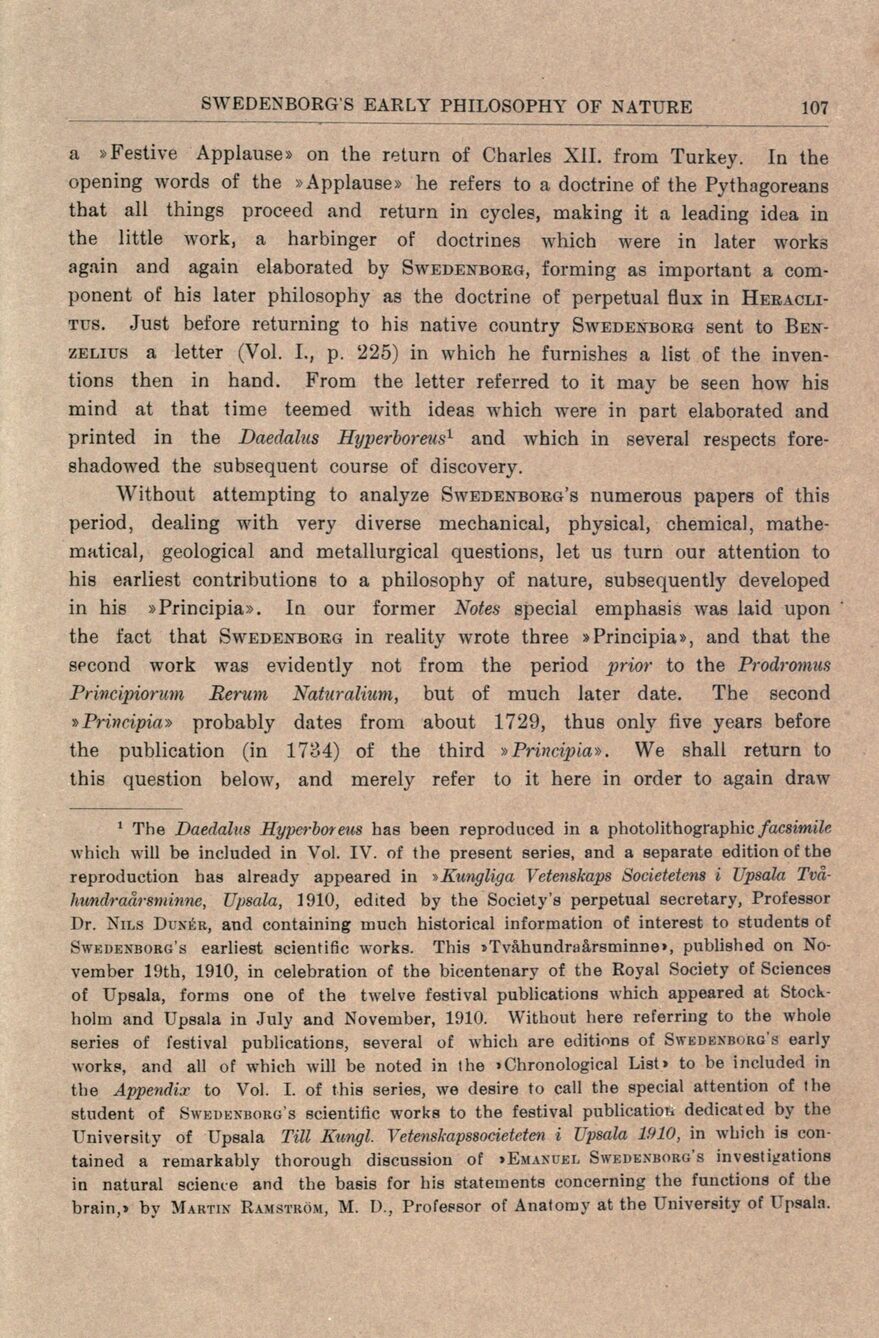
Full resolution (JPEG) - On this page / på denna sida - Sidor ...

<< prev. page << föreg. sida << >> nästa sida >> next page >>
Below is the raw OCR text
from the above scanned image.
Do you see an error? Proofread the page now!
Här nedan syns maskintolkade texten från faksimilbilden ovan.
Ser du något fel? Korrekturläs sidan nu!
This page has never been proofread. / Denna sida har aldrig korrekturlästs.
a »Festive Applause» on the return of Charles XII. from Turkey. In the
opening words of the »Applause» he refers to a doctrine of the Pythagoreans
that all things proceed and return in cycles, making it a leading idea in
the little work, a harbinger of doctrines which were in later works
again and again elaborated by Swedenborg, forming as important a
com-ponent of his later philosophy as the doctrine of perpetual flux in
Heracli-tus. Just before returning to his native country Swedenborg sent to
Ben-zelius a letter (Vol. I., p. 225) in which he furnishes a list of the
inventions then in hånd. From the letter referred to it may be seen how his
mind at that time teemed with ideas which were in part elaborated and
printed in the Daedalus Hyperboreus1 and which in several respects
fore-shadowed the subsequent course of discovery.
Without attempting to analyze Swedenborg’s numerous papers of this
period, dealing with very diverse mechanical, physical, Chemical,
mathe-matical, geological and metallurgical questions, let us turn our attention to
his earliest contributione to a philosophy of nature, subsequently developed
in his »Principia». In our former Notes special emphasis wTas laid upon
the faet that Swedenborg in reality wrote three »Principia», and that the
second work was evidently not from the period prior to the Prodromus
Principiorum Rerum Naturalium, but of mueh later date. The second
»Principia» probably dates from about 1729, thus only five years before
the publication (in 1734) of the third »Principia». We shall return to
this question below, and merely refer to it here in order to again draw
1 The Daedalus Hyperboreus has been reproduced in a photolithographic faesimile
which will be ineluded in Vol. IV. of the present series, and a separate edition of the
reproduction bas already appeared in i>Kungliga Vetenskaps Societetens i Upsala
Tva-hundraårsniinne, Upsala, 1910, edited by the Society’s perpetual secretary, Professor
Dr. Nils Dunér, and containing ruuch historical information of interest to students of
Swedenborg’s earliest scientific works. This »Tvåhundraårsminne», published on
November 19th, 1910, in celebration of the bieentenary of the Royal Society of Sciences
of Upsala, forms one of the twelve festival publications which appeared at
Stockholm and Upsala in July and November, 1910. Without here referring to the whole
series of festival publications, several of which are editions of Swedenborg s early
works, and all of which will be noted in the »Chronological List» to be included in
the Appendix to Vol. I. of this series, we desire to call the special attention of the
student of Swedenborg’s scientific works to the festival publication dedicated by the
University of Upsala Till Kungl. Vetenskapssocieteten i Upsala 1910, in which is
con-tained a remarkably thorough discussion of »Emanuel Swedenborg s investigations
in natural science and the basis for his statements concerning the funetions of the
brain,» by Martin Ramström, M. D., Professor of Anatomv at the University of 1 psala.
<< prev. page << föreg. sida << >> nästa sida >> next page >>